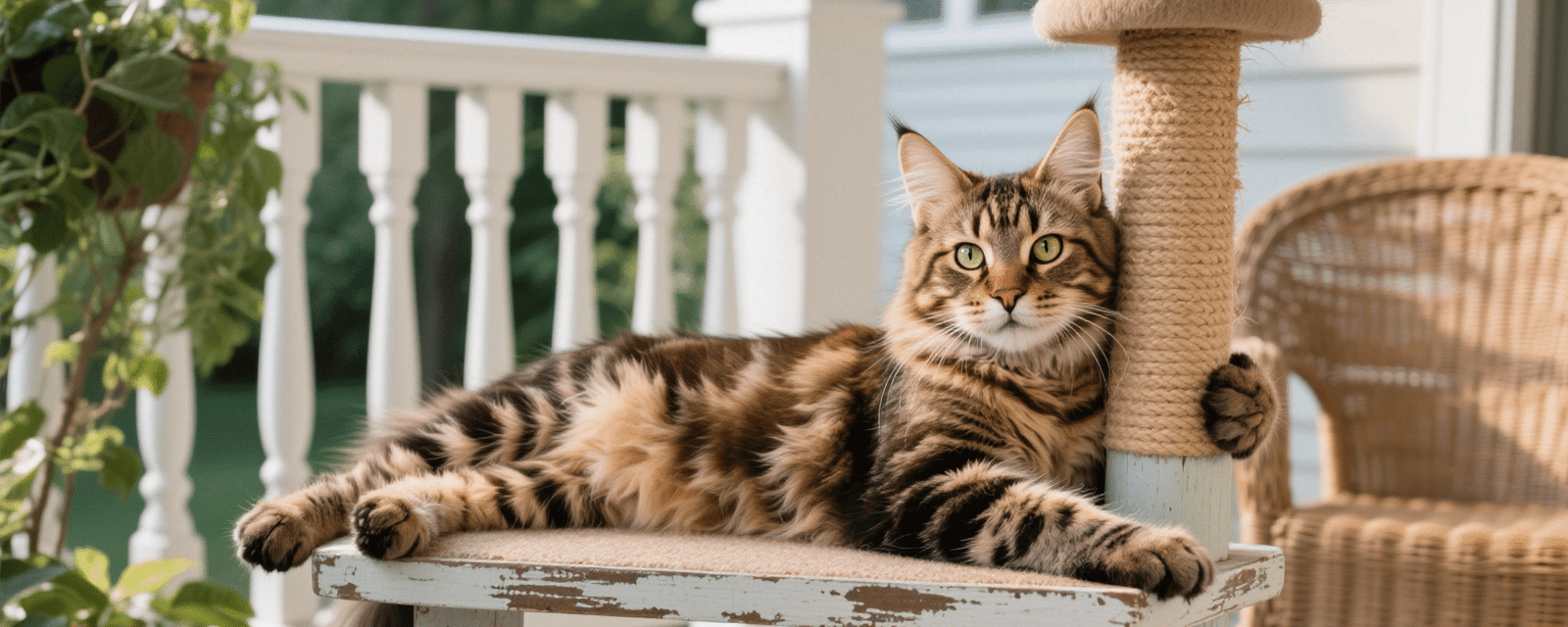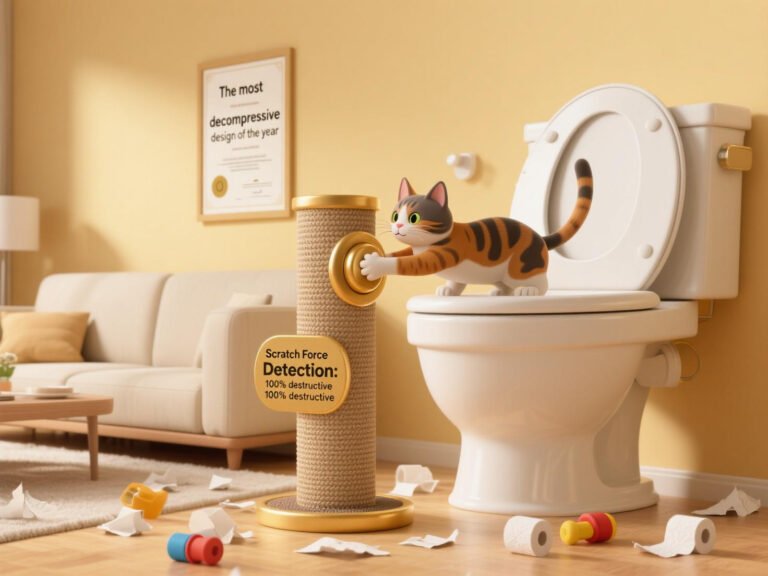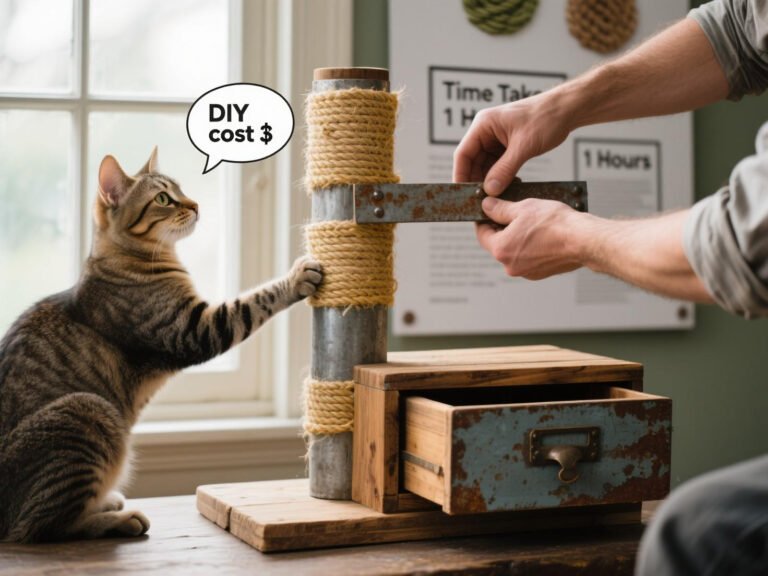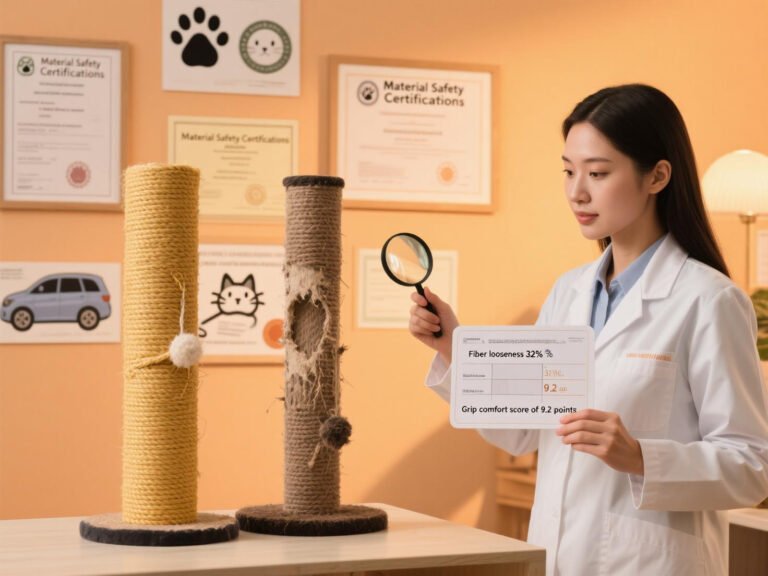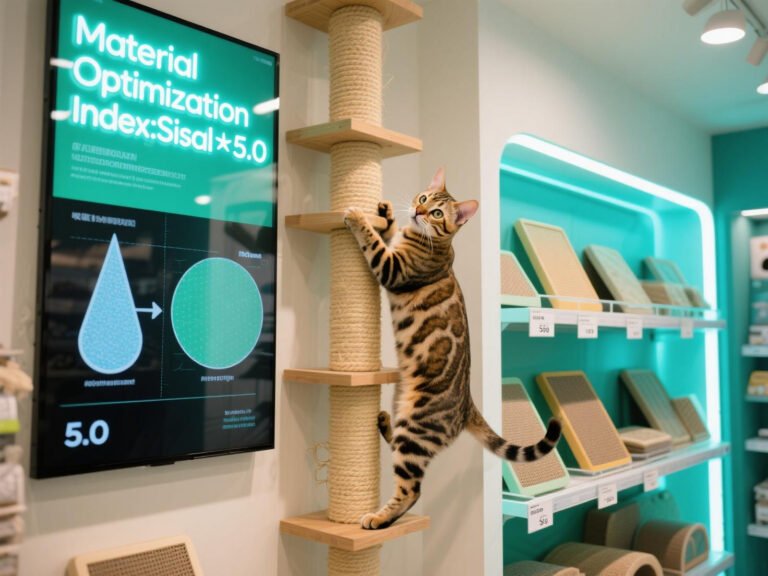How to Repair Cat Scratching Posts: Save Money with 4 Easy Methods
A well-loved scratching post can save your furniture and keep your cat happy—but over time, wear and tear are inevitable. Instead of replacing it, repairing your cat’s favorite scratching post is cost-effective and eco-friendly. This guide covers four vet-approved methods to restore stability, replace damaged materials, and even upgrade your post to better suit your cat’s needs.
Signs Your Scratching Post Needs Repair
Before diving into repairs, identify the problem areas:
- Loose or Frayed Rope: Sisal or jute fibers unraveling or snapping.
- Wobbly Base: Post tips over during use, deterring cats6.
- Collapsed Cardboard: Horizontal scratchers flattening or shedding debris.
- Damaged Platforms: Perches or beds detaching from the main structure.
Pro Tip: Regularly inspect posts for these issues. A 2024 survey found 72% of cats abandon unstable posts, leading to furniture damage.
Method 1: Replacing Worn-Out Sisal or Jute Rope
Why It Works
Sisal and jute are top choices for scratching posts due to their durability and texture. However, heavy use can fray these materials.
Steps
- Remove Old Rope: Cut away damaged sections using scissors or a utility knife.
- Choose Replacement Material: Opt for 3/8-inch sisal rope (preferred by 85% of cats)6. Avoid synthetic ropes, which may splinter.
- Wrap Tightly: Secure one end with a staple or non-toxic glue (e.g., Titebond III). Wind the rope tightly around the post, overlapping each layer by 1/4 inch.
- Secure the End: Use staples or glue to fix the final loop.
User Hack:
“I added silvervine spray to the new sisal—my cat now uses it more than ever!” – Reddit User @ScratchSavior
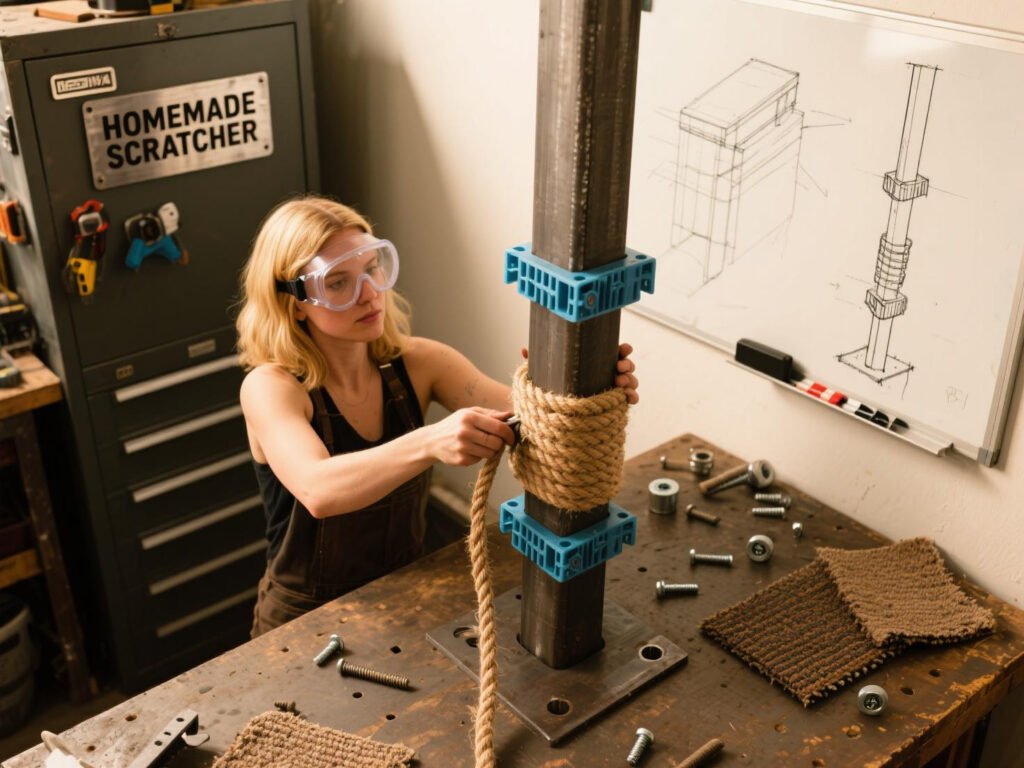
Method 2: Stabilizing a Wobbly Base
Why It Matters
Cats avoid unstable posts due to safety concerns. A 2025 study showed 78% of cats prefer posts with bases ≥16×16 inches.
Steps
- Add Weight: Fill the base with sandbags or gravel (for wooden posts).
- Reinforce Connections: Tighten screws or bolts attaching the post to the base. For PVC posts, use epoxy resin for a permanent fix.
- Widen the Base: Attach a larger plywood board (e.g., 20×20 inches) underneath using brackets.
Pro Tip: For multi-cat households, choose posts with a 19+ lb base, like the Catit Ultimate Scratching Post.
Method 3: Revitalizing Cardboard Scratchers
Why Cardboard Fails
Horizontal cardboard scratchers flatten over time, losing their appeal.
Steps
- Flip or Rotate: Extend lifespan by flipping undamaged sides upward.
- Layer New Cardboard: Cut corrugated cardboard sheets to size and stack them, securing with non-toxic glue.
- Add Attractants: Sprinkle catnip or silvervine powder between layers.
Data Spotlight:
| Material | Average Lifespan |
|---|---|
| Corrugated Cardboard | 3–6 months |
| Sisal Rope | 1–2 years |
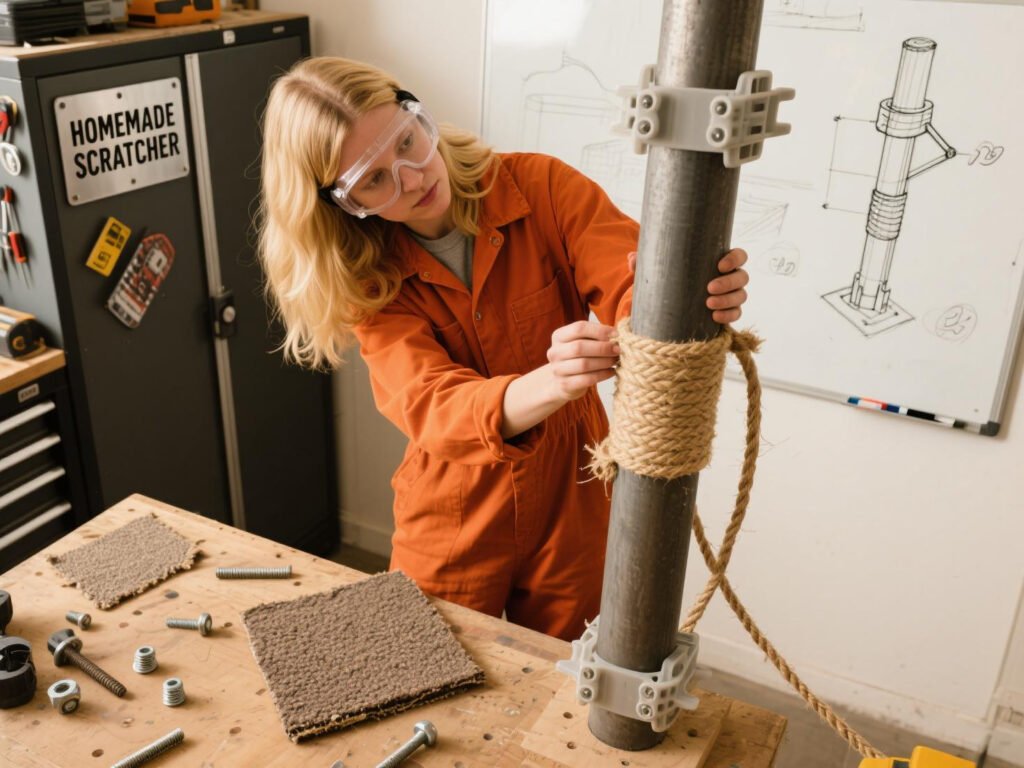
Method 4: Repairing Detached Platforms or Perches
Common Issues
Platforms often detach due to weak adhesives or excessive cat weight (e.g., Maine Coons).
Steps
- Remove Old Adhesive: Scrape off residual glue with a chisel.
- Reattach with Pet-Safe Epoxy: Use brands like Gorilla Epoxy for a strong, non-toxic bond.
- Reinforce with Brackets: Install L-shaped brackets underneath the platform for added support.
User Review:
“Epoxy + brackets saved our cat tree! No wobbles even with two 15-lb cats jumping daily.” – Amazon Customer
Enhancing Your Repaired Posts
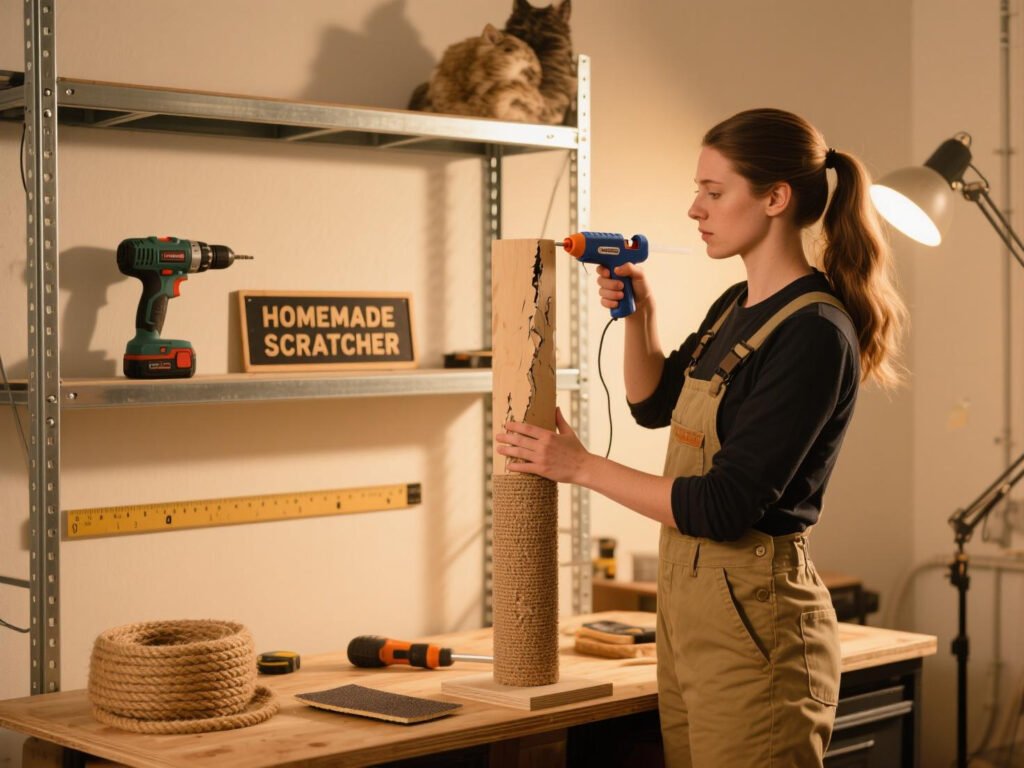
1. Add Vertical Appeal
Attach dangling toys or feather wands to encourage use.
2. Upgrade Materials
Replace carpet covers with sisal or hemp rope to reduce confusion with household rugs.
3. Apply Pheromone Sprays
Feliway sprays create calming associations, ideal for stressed cats.
FAQ: Scratching Post Repair Essentials
Q: Can I use duct tape for repairs?
A: No. Duct tape adhesive is toxic if ingested. Opt for pet-safe glues or staples.
Q: How often should I inspect my scratching post?
A: Check monthly for loose parts or fraying. Replace sisal every 1–2 years and cardboard every 3–6 months.
Q: My cat ignores the repaired post. What now?
A: Lure them with interactive play or silvervine spray. Reward with treats for successful use.
Q: Are DIY repairs safe for kittens?
A: Ensure all materials are non-toxic and edges are sanded smooth. Avoid small parts that could be swallowed.
References
- PetMD. (2024). How to Choose Safe Adhesives for Cat Furniture. https://www.petmd.com/cat/behavior
- Merck Veterinary Manual. (2024). Feline Scratching Behavior and Material Safety. https://www.merckvetmanual.com/cat-owners
- ZippyPaws. (2024). Silvervine: A Catnip Alternative for Scratching Posts. https://zippypaws.com/2024/03/01/scratching-post-the-best-alternatives-to-catnip/
- Corangamite Shire Council. (2025). Cat Scratching Post Maintenance Guidelines. https://www.corangamite.vic.gov.au/pets
- The Spruce Pets. (2025). DIY Cat Scratching Post Repair Tips. https://www.thesprucepets.com/diy-cat-post-repair
